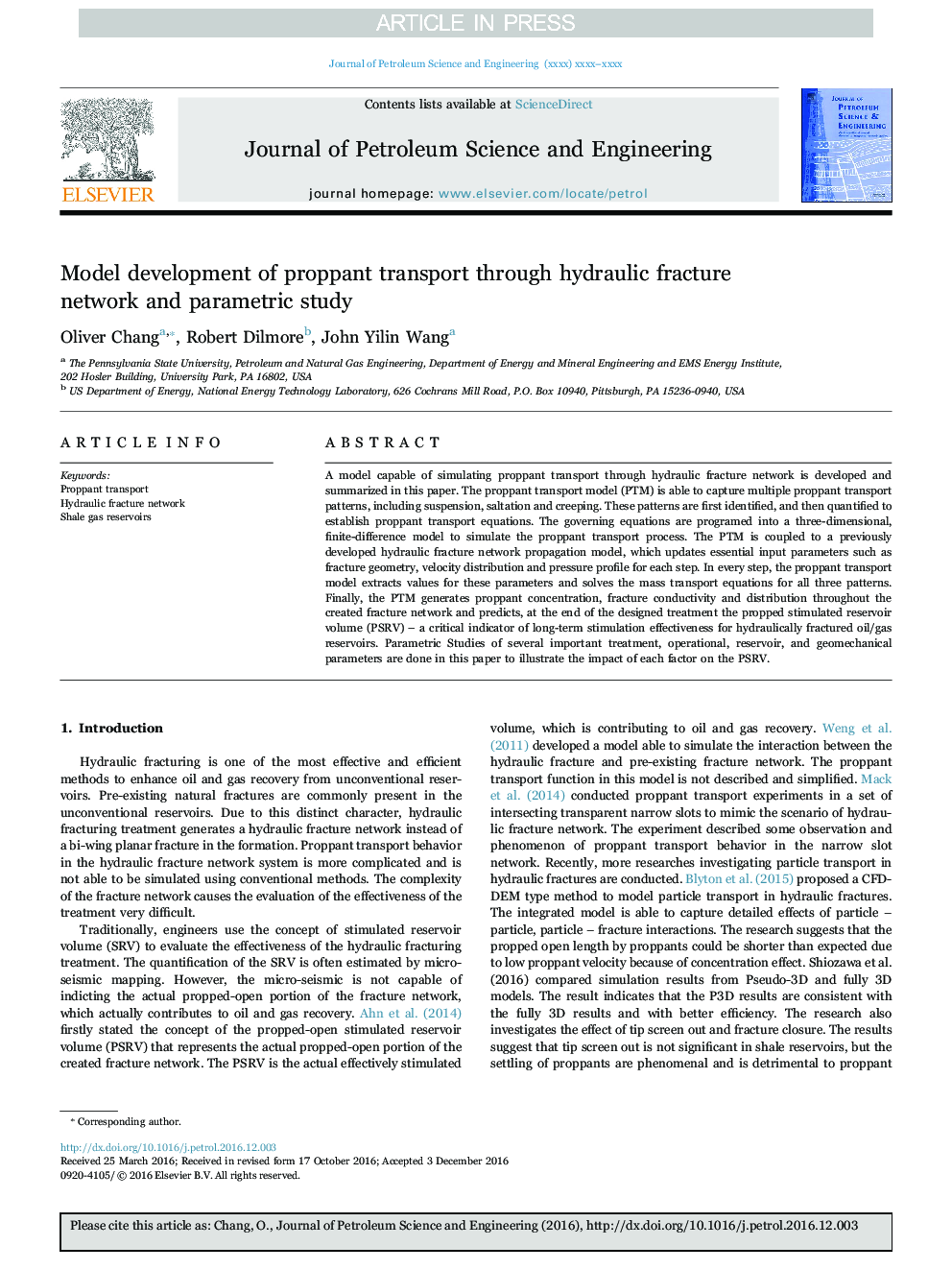| Article ID | Journal | Published Year | Pages | File Type |
|---|---|---|---|---|
| 5484336 | Journal of Petroleum Science and Engineering | 2017 | 14 Pages |
Abstract
A model capable of simulating proppant transport through hydraulic fracture network is developed and summarized in this paper. The proppant transport model (PTM) is able to capture multiple proppant transport patterns, including suspension, saltation and creeping. These patterns are first identified, and then quantified to establish proppant transport equations. The governing equations are programed into a three-dimensional, finite-difference model to simulate the proppant transport process. The PTM is coupled to a previously developed hydraulic fracture network propagation model, which updates essential input parameters such as fracture geometry, velocity distribution and pressure profile for each step. In every step, the proppant transport model extracts values for these parameters and solves the mass transport equations for all three patterns. Finally, the PTM generates proppant concentration, fracture conductivity and distribution throughout the created fracture network and predicts, at the end of the designed treatment the propped stimulated reservoir volume (PSRV) - a critical indicator of long-term stimulation effectiveness for hydraulically fractured oil/gas reservoirs. Parametric Studies of several important treatment, operational, reservoir, and geomechanical parameters are done in this paper to illustrate the impact of each factor on the PSRV.
Related Topics
Physical Sciences and Engineering
Earth and Planetary Sciences
Economic Geology
Authors
Oliver Chang, Robert Dilmore, John Yilin Wang,
